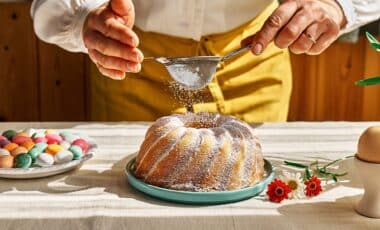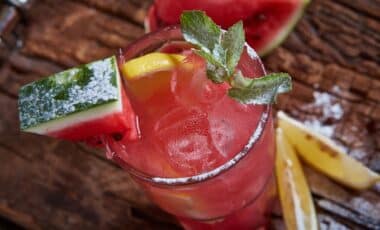 Drouhin Sotheby’s auction Romanee-Conti La Tache
Drouhin Sotheby’s auction Romanee-Conti La Tache
“Scarcity is everything,” says Robert Sleigh, managing director of operations at Sotheby’s Hong Kong. “That’s where the stratospheric prices come from, and you see that throughout all markets we deal with, whether that’s Chinese works of art, contemporary painting, jewellery, watches, everything we sell. Rarity is always a leading factor in price.”
It has certainly proved to be the case when it comes to wine and whisky. At a Sotheby’s auction late last year, a bottle of Domaine de la Romanée Conti hit a hammer price of US$558,000, setting a world record not just for a 750ml bottle of Burgundy but for any bottle of wine at auction. Similarly, a single bottle of The Macallan 60 Year Old single malt whisky set a world auction record after selling for £1.2 million at Christie’s in London in November 2018. The ultra-rare elixir was presented in a one-of-a-kind bottle hand-painted by Irish artist Michael Dillon.
 The Martell Cordon Bleu Limited Edition (Photo: Courtesy of The Martell)
The Martell Cordon Bleu Limited Edition (Photo: Courtesy of The Martell)
Whiskies have huge potential for scarcity. And that scarcity can come in different forms, whether through age, which often leads to limited availability, or with bottles that have a one-of-a-kind tale to tell.
Take the Port Ellen 39 Year Old, one of Diageo’s most interesting bottlings currently available. “Port Ellen is one of our most special and most loved liquids,” says Drew Mills, marketing director of Diageo Brands, Moët Hennessy Diageo Hong Kong. “The distillery closed in the early ’80s and, as such, very little liquid remains. This is of huge appeal to collectors, who know they are buying a piece of history that cannot be replicated.”
Releases can also be deliberately limited. This applies particularly to the spirits market, where one-off or limited editions are often created. “Limited editions are highly sought after by collectors around the world. And that’s definitely an area for investors to target,” says Sleigh.
 The Macallan 72 Years (Photo: Courtesy of The Macallan) Old in Lalique
The Macallan 72 Years (Photo: Courtesy of The Macallan) Old in Lalique
High-end whisky distilleries and cognac houses are particularly creative with their limited edition The Martell Cordon Bleu Limited Edition, featuring a cyanotype bottle and gift box designed by French artist Mathilde de l’Ecotais releases, choosing exceptional liquid gold, some in commemoration of a special occasion, but also collaborating with artists and designers.
Last year, for example, Martell worked with French artist Mathilde de l’Ecotais to craft a special cyanotype bottle and gift box for the Martell Cordon Bleu Limited Edition, while The Macallan has released a number of exceptional bottlings housed in fine Lalique crystalware.
 Domaine de la Romanee Conti 1945 (Photo: Courtesy of Sotheby’s)
Domaine de la Romanee Conti 1945 (Photo: Courtesy of Sotheby’s)
Rarity of the liquid alone can be enough, though, and collectors and investors are increasingly looking at a wide range of spirits. Limited release tequila has sold well in the US, armagnac as well as cognac is popular in the UK, and Diageo points to an increased interest in rum.
“While whisky is clearly the category in highest demand, there is certainly a growing interest in rum from a small but dedicated fan base. It’s a deliciously rich spirit, with great heritage and, like whisky, often with interesting stories to tell,” says Mills.
See also: Gallery: The Unveiling Of Thailand Tatler’s Top 20 Best Restaurants Of 2019
Asian spirits are on the up, too, particularly maotai in the Chinese market, with older bottles from the 1960s and ’70s garnering the most interest at auction.
 Kweichow Moutai (Photo: Dan Murphy’s Australia)
Kweichow Moutai (Photo: Dan Murphy’s Australia)
The source and provenance of any liquid investment is as important as its rarity and quality. Every investor wants to know that their asset is authentic. Distilleries will release to clients and collectors, or to a trusted if limited selection of retailers, but also directly to auction houses.
“We work closely with distilleries, châteaux and wine producers, so there’s extra appeal for collectors who like the idea that the source couldn’t be any better or more direct,” says Sleigh. Provenance is thereby guaranteed and in many cases products are fresh to market, another enticing factor.
 Diageo’s Casks of Distinction (Photo: Courtesy of Diageo)
Diageo’s Casks of Distinction (Photo: Courtesy of Diageo)
Once a purchase or investment is made, if a buyer is keen to hold their bottles, it is essential that they are stored properly. Spirits are generally more robust than wine, but if resale is the end game it is preferable that even their labels are kept pristine.
Spirits purchased for the right reasons and held safely appear to offer a stable performance for investors, and one removed from the financial markets. And best of all, if their value does drop, an exceptional tipple awaits.
See also: Here Are Thailand Tatler’s 20 Best Restaurants Of 2019







